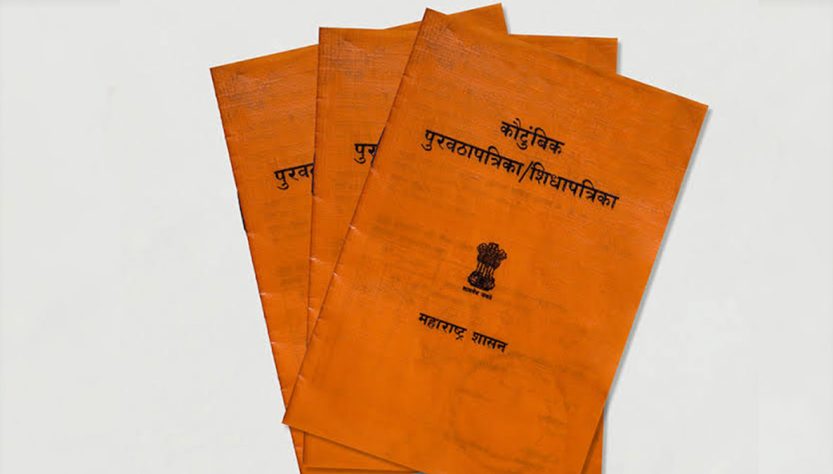On 1st May 1999, Government of Maharashtra implemented the three color ration card scheme.
The first is a Yellow Colored Ration Card, this is for the extremely poor (below poverty line) with annual income less than 15,000 Rupees (or 375 USD as per conversion rate of 40 INR for every USD).
Under the Minimum Common Programme of Government of India, the poor families in the State were provided 10 kg. of foodgrains at half the rate of normal rate w.e.f. 1st June, 1997. The quantum was raised to 20 kg. of food grains w.e.f. 1.4.2000. Now the quantum for BPL and APL beneficiaries has been enhanced to 35 kg. and fixed 15 Kg. respectively w.e.f. 1.4.2002.
The second one is an Orange Card for Below Poverty Line Families. Families with annual income of 15,000 to 1,00,000 (That is 375 USD to 2,500 USD per year calculated at 40 INR for 1 USD at 1999 Conversion Rate). These were called APL (Above Poverty Line), yet they were entitled to 15 Kg of Food Grains, Kerosene (if they did not have a gas connection).
This criteria has not been revised in the last 27 years.
If this was to be linked to just the currency conversion between INR and USD, the annual income would have risen to double of the one calculated in 1997.
Thus BPL would be 750 USD, which is 60,000/- and 2,500 USD (for APL) would have become 2,00,000 per year.
The other method would have been to link inflation to the income level as income levels have not remained static. Thus, if you take an average of 6% annual inflation, 15,000 income would have become 72,335/- and 1,00,000 would have become 4,82,234/- as the qualifying criteria.
Not only has the government not revised the eligibility criteria, it has not linked the Income Tax data to the ration card holders.
Thus, we have a situation, where people who declared their income as less than 1,00,000 in 1997, continue to draw ration at subsidized rates, all at the cost of the tax payers (of which they too may be a part).
These people also get benefits of all schemes announced from time to time for BPL and APL families.
I know of many such cases personally.
A lady who worked with us in our restaurant, is earning 20,000 per month from her cooking activities, her two sons earn 20,000 to 25,000 each and her husband earns another 15,000 working as a security guard. Her family income is this 80,000 per month or 9,60,000 per year. Yet she holds an orange ration card and gets subsidized food grains and benefit of all such schemes announced by the government from time to time.
This not only adds to the subsidy burden but also skews economic data.
Thus, if things were to be calculated properly, the 80,00,00,000 Free Ration dole will fall to less than 20%, removing almost 64,00,00,000 (Sixty Four Crore) people from the Free Ration net.
So, the question is why is no one doing this?
You see, this is a political hot potato and no politician would like to offend almost a third or India’s population and risk being thrown out of power.
So, grin and bear it.
Should the Government review the Ration Card Issuing Criteria?


